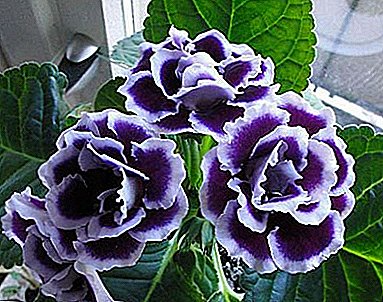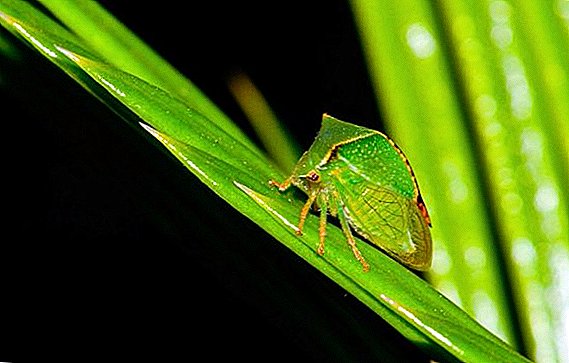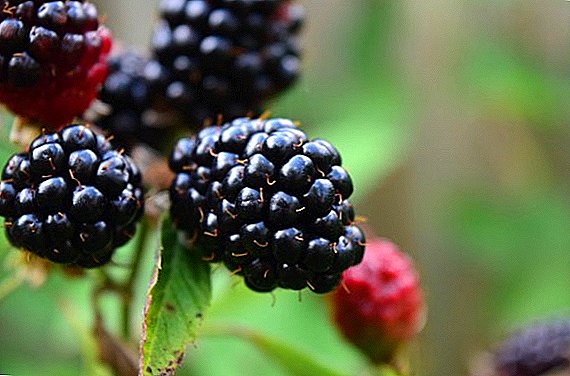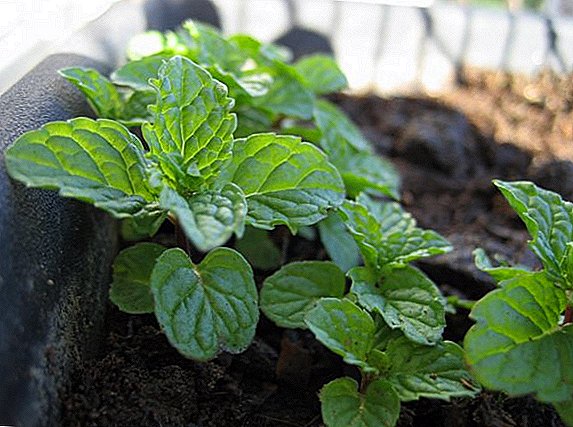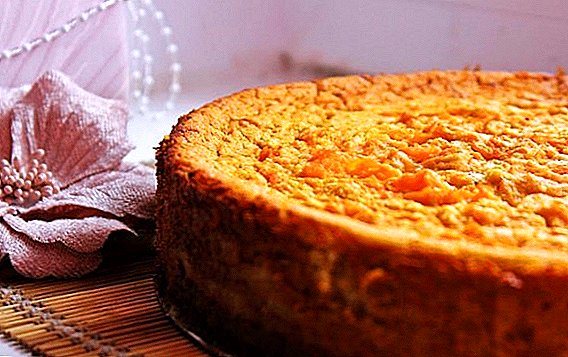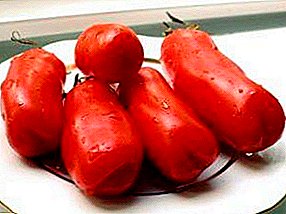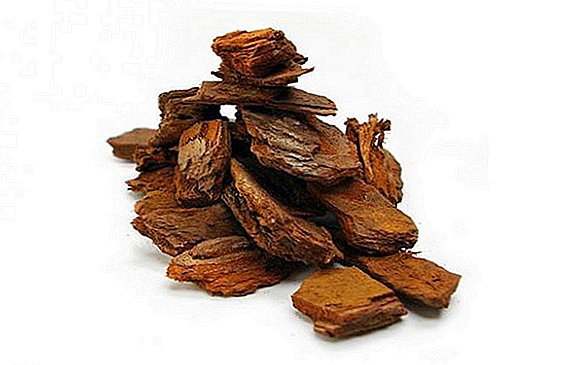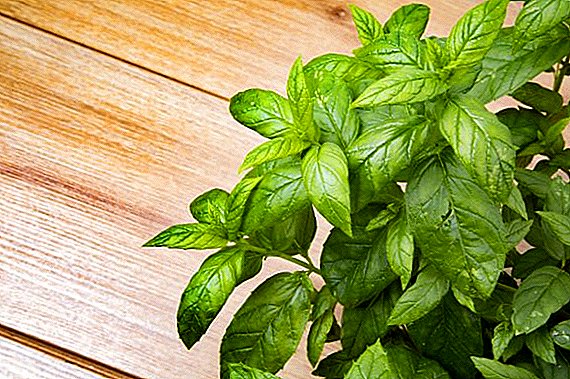 Mint is a very valuable and useful plant that was used by man in ancient times. In the modern world it is in demand in medicine, cooking, perfumery. The article provides information on what mint varieties are available, and brief information about some of them is given.
Mint is a very valuable and useful plant that was used by man in ancient times. In the modern world it is in demand in medicine, cooking, perfumery. The article provides information on what mint varieties are available, and brief information about some of them is given.
Did you know? According to the database of The Plant List, the genus Mint belongs to the family Luminous and consists of 42 species and hybrids.
Lemon Mint
 Other names of this mint - honey mint, honey slipper, honey, melissa. Although not related to the genus Mint, but belongs to the same family. It has a pleasant refreshing taste of lemon. Comes from southern Europe, the Mediterranean.
Other names of this mint - honey mint, honey slipper, honey, melissa. Although not related to the genus Mint, but belongs to the same family. It has a pleasant refreshing taste of lemon. Comes from southern Europe, the Mediterranean.
It is considered one of the most valuable plant species. It is valued for its high taste and medicinal properties, contains a large amount of vitamin C, carotene, essential oils. For many centuries it has been cultivated as a honey plant. It is a perennial, blooms in summer, the fruits ripen in autumn.
Speaking of lemon mint, you can not ignore the description of the plant. Its height is from 30 cm to 1 m 20 cm. Stems are erect, branched, tetrahedral, with pubescence with short hairs. Petiolate, pubescent leaves ovoid, bright green, located opposite, have cloves along the edge. Pedicle short, bluish-white or light-purple flowers (from 6 to 12) are located in the axils of the upper foliage. Large, shiny black fruit remains suitable for sowing for 2-3 years.
Important! This is a relatively winter-hardy plant, but in order to avoid frosting for the winter, it is better to mulch with peat.
Home Mint
 Mint - otherwise mint, molar tree, plektranthus or sporotsvetnik. He is also a representative of Lamous, but does not belong to the genus Mint. It is an annual or perennial semi-succulent evergreen plant. In nature, it grows in tropical and subtropical climates. With proper care can live on your window up to 5 years.
Mint - otherwise mint, molar tree, plektranthus or sporotsvetnik. He is also a representative of Lamous, but does not belong to the genus Mint. It is an annual or perennial semi-succulent evergreen plant. In nature, it grows in tropical and subtropical climates. With proper care can live on your window up to 5 years.
It is a shrub, dwarf shrub or grass. The leaves of homemade mint contain an essential oil of complex composition, which gives it a pleasant aroma. Used for decorative, medicinal purposes, cooking (as a seasoning of leaf and root vegetables), it is believed that the aroma of the plant can repel insects such as moths, mosquitoes, etc.
It grows from 30 to 150 cm. Tetrahedral stems can have pubescence or be bare. The leaves are elliptical, ovate and rounded in shape, arranged oppositely, with a cross. Small flowers with bracts leaves, collected in inflorescences, umbrellas. The fruit consists of 4 nuts.
Menthol Mint
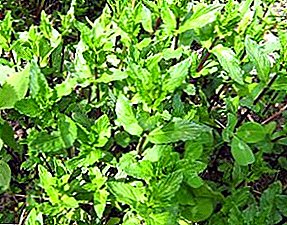 Menthol mint herb is a variety of peppermint, but, unlike it, contains a large amount of menthol. It has a rather sharp, intense, resistant odor and high resistance to pests and diseases. This variety has a good winter hardiness.
Menthol mint herb is a variety of peppermint, but, unlike it, contains a large amount of menthol. It has a rather sharp, intense, resistant odor and high resistance to pests and diseases. This variety has a good winter hardiness.
It has a wide area of demand - from cosmetology to cooking, used as an anti-inflammatory, choleretic agent for the treatment of bronchitis, improves digestion. Mint menthol is used as a spice, and even for making mojito.
Reaches from 30 to 65 cm in height (depending on the lighting area). Stems are dark, straight, powerful. The leaves of dark green color grow to 5-7 cm in length and 1.5-2 cm in width, oblong shape, slightly twisted. Flowering occurs in mid-July - early August. Small, purple flowers are collected in inflorescences.
Did you know? The name of the genus Mint is derived from the nymph Menty (Minty, Minfi). According to the Greek myth, she was the beloved of the god of the underworld of Hades and turned into fragrant grass by his wife Persephone.
Peppermint
 A plant like peppermint is the most famous and common type of peppermint. This is the result of hybridization of garden mint and water. Also used in cooking, pharmacology and medicine. It is a valuable honey plant. In nature does not grow. It has a burning taste of leaves, for which he received the name. It is used in folk medicine and modern pharmacology. Contraindicated in people suffering from low blood pressure and varicose veins.
A plant like peppermint is the most famous and common type of peppermint. This is the result of hybridization of garden mint and water. Also used in cooking, pharmacology and medicine. It is a valuable honey plant. In nature does not grow. It has a burning taste of leaves, for which he received the name. It is used in folk medicine and modern pharmacology. Contraindicated in people suffering from low blood pressure and varicose veins.
Peppermint refers to perennial herbaceous plants, its description is quite simple. Hollow, erect, branched stems grow from 30 cm to 1 m in height. Happen naked and pubescent (hairs rare and short, pressed).
Oblong leaves ovoid, grow oppositely, crosswise. Stems are short. Heart-shaped base, sharp edge. Light purple or pinkish flowers of small size are collected in half-muts on the top of the stem. The beginning of flowering occurs at the end of June and lasts until September. Fruits consisting of 4 nuts are rarely formed.
Curly mint
 If we talk about what mint is, besides peppermint with similar characteristics, mint is curly very close to it in terms of distribution and use. It is also called curly, kolosovidnoy, German, garden, spring, mint.
If we talk about what mint is, besides peppermint with similar characteristics, mint is curly very close to it in terms of distribution and use. It is also called curly, kolosovidnoy, German, garden, spring, mint.
It contains linalool and carvone, which gives it a strong smell and a special taste, but it contains almost no menthol, and therefore this type has no cooling taste. Curly mint essential oil is valued higher than peppermint oil. In addition to medicine and cooking, it is used in soap, tobacco and confectionery industry.
Refers to perennial herbaceous plants. Height - 80-90 cm. The numerous stems are erect, bare. The leaves grow oppositely, have an oblong shape, are wrinkled and curly, jagged along the edge. Above are bare, from the bottom there are sparse hairs located along the veins. Correct, mauve flowers, with very short pedicels, are collected in inflorescences and are located at the end of the stem. It blooms from June to September. Seeds ripen in October.
Important! For storing curly mint, paper or canvas bags or bags should be better placed in a cool, dark, dry place.
Korean Mint
 Korean mint, also called wrinkled polygrid, or Tibetan lofant, also belongs to the family of Cluster, but not to the genus Mint. Homeland - North Asia. Grown as an ornamental, spicy and medicinal plant.
Korean mint, also called wrinkled polygrid, or Tibetan lofant, also belongs to the family of Cluster, but not to the genus Mint. Homeland - North Asia. Grown as an ornamental, spicy and medicinal plant.
It has tonic and anti-aging properties, normalizes pressure. Included in the composition of drugs that improve the composition of the blood used in diseases of the respiratory system, to combat liver disease. It is considered one of the best mint varieties for a soft and long lasting effect on the human immune system. For this reason, in the East, enjoys the glory of a worthy opponent of ginseng. Korean mint essential oil has bactericidal properties.
This is a perennial shrub. It grows up to 1 m. Stems are erect, tetrahedral. The petiole leaves are 10 cm long and oval in shape and have notches on the edge. Tubular flowers of bluish-purple or white color are collected in spicate inflorescences. Bloom in July-September. It smells like mint, anise, and oregano at the same time. Fruit ripening occurs in September. The species is winter-hardy enough, withstands temperatures down to -15 ° C.
Dog mint
 Budra ivyhsevidy, or dog mint, Fortress man - This is a perennial, very fragrant, herbaceous plant, not belonging to the genus Mint, but also from the family of Cluster. It grows in Eurasia, in temperate zones. The taste is bitter, burning. It refers to honey plants, medicinal (widely used as an anti-inflammatory, choleretic, healing agent), used in the manufacture of tonic drinks.
Budra ivyhsevidy, or dog mint, Fortress man - This is a perennial, very fragrant, herbaceous plant, not belonging to the genus Mint, but also from the family of Cluster. It grows in Eurasia, in temperate zones. The taste is bitter, burning. It refers to honey plants, medicinal (widely used as an anti-inflammatory, choleretic, healing agent), used in the manufacture of tonic drinks.
It grows no higher than 40 cm. Stems creeping, bare or pubescent with short hairs, from 20 to 50 cm long. The shoots are numerous, rooting. Leaves with long petioles (the lower the leaf is located, the longer its petiole) have a reniform or rounded-reniform shape, located opposite. Collected in 3-4 small flowers have a purple or lilac-bluish color. Bloom until mid-summer. Fruits are brown, up to 2 mm in length.
Did you know? The mint plant has been used in Chinese medicine for several thousand years as an anti-inflammatory, carminative, choleretic, diaphoretic, deodorizing, and local anesthetic, and mint oil is recommended for washing the eyes.
Cat mint
Cat mint (Catnip) belongs to the genus Kotovnik, not Mint, but also to the same family. It has a strong, peculiar lemon scent that attracts felines (thanks to Nepetalactone, an essential oil). Chooses forest glades, vacant lots, weedy places, slopes, roadsides.
Often cultivated in the near-habit zones, as it is a valuable honey plant. Also used in perfumery, soap making, confectionery production and, of course, in medicine. The people used in diseases of the gastrointestinal tract, headaches, skin diseases, hysteria, exhaustion. This is another long-term representative of the flora. It grows from 40 cm to 1 m in height. The roots are woody, branchy. Stems erect, strong. The pubescent leaves, triangular-ovoid, with large teeth along the edge and a sharp tip, have a heart-shaped base. Dirty-white flowers (purple or purple specks located on the lower lip) are collected in complex half-umbrellas at the ends of the shoots, bloom in June and July. The smooth oval fruit of brown color ripens in the middle - the end of summer.
This is another long-term representative of the flora. It grows from 40 cm to 1 m in height. The roots are woody, branchy. Stems erect, strong. The pubescent leaves, triangular-ovoid, with large teeth along the edge and a sharp tip, have a heart-shaped base. Dirty-white flowers (purple or purple specks located on the lower lip) are collected in complex half-umbrellas at the ends of the shoots, bloom in June and July. The smooth oval fruit of brown color ripens in the middle - the end of summer.
Field mint
 Field mint, or meadow, also called wild - Representative of the mint genus. Growth area - Europe, Central and Western Asia, the Caucasus, partly India and Nepal. It prefers the banks of rivers, other bodies of water, wet meadows, fields, marshlands. She does not need any care.
Field mint, or meadow, also called wild - Representative of the mint genus. Growth area - Europe, Central and Western Asia, the Caucasus, partly India and Nepal. It prefers the banks of rivers, other bodies of water, wet meadows, fields, marshlands. She does not need any care.
Mostly essential oil with a pungent smell and bitter taste consists of menthol and various terpenes. It has been experimentally proven that inhaling the aroma of field mint during the day reduces calorie intake by 1,800 kcal / day. Apply in cooking, medicine (in the treatment of bloating, gastritis, if the acidity is increased, liver disease). The powder is used as an antiemetic.
Perennial grass. Maybe 15, and 100 cm in height. Rhizome creeping. Branched stems are upright, but they are usually prostrate. Leaves can be ovate, oblong-elliptical or oblong-ovate. Pointed at the top. Flowers of lilac or lilac-pink color on pedicels are combined in false, spherical verticils. It blooms from June to October. The fruit consists of 4 smooth eremov. Its ripening occurs in August-October.
Curly Mint
Curly mint is one of the curly mint names described above.
Mint leaf
 It is found in Africa, Asia, almost all of Europe. The area of application is the same as that of other members of the genus, plus - the production of green cheese. It has a pleasant aroma. The main component of the essential oil is pulegon, also contains carvacrol, menthol, etc.
It is found in Africa, Asia, almost all of Europe. The area of application is the same as that of other members of the genus, plus - the production of green cheese. It has a pleasant aroma. The main component of the essential oil is pulegon, also contains carvacrol, menthol, etc.
The long leaf mint is rich in ascorbic acid. It has good frost resistance. Demanding of humidity and light. Propagated by rhizome.
Important! For use as a spicy aromatic plant, this mint should be collected before flowering and only occasionally during this period.Soft-fluffy look, up to 75 cm tall. Tetrahedral stems - strong, slightly pubescent, branched. Creeping roots. Pointed, pubescent leaves of a grayish tint, lanceolate or ovate-oblong, have a fluffy-felt surface and jagged edges. Small flowers are clustered in racemes, whitish inflorescences, have purple or pale lilac color. It blooms in July-August, and bears fruit in August-September.
Ginger Mint
 Ginger or thin - Perennial herb mint. In nature, found on the territory of Egypt, Southeast Europe and in the West of Asia. It has no refrigeration effect. On the advice of traditional medicine, is used for inflammation of the gastrointestinal tract. It is used, in particular, to combat flatulence, as a sedative.
Ginger or thin - Perennial herb mint. In nature, found on the territory of Egypt, Southeast Europe and in the West of Asia. It has no refrigeration effect. On the advice of traditional medicine, is used for inflammation of the gastrointestinal tract. It is used, in particular, to combat flatulence, as a sedative.
Tetrahedral, straight, branched stems from 30 cm to 1 m high have dense foliage. The roots are horizontal, well developed. Leaves on short petioles, 8 cm × 2 cm, pointed at the end. Form - oblong-ovate. Due to the motley yellow-green color, ginger mint is also grown as an ornamental plant. Small flowers, collected in false whorls, form spike-shaped inflorescences of pink or light purple color. Bloom from June to October. Fruits are rarely formed.
Chocolate mint
 Chocolate Peppermint Plant - original peppermint variation. It spreads quickly and grows in damp places. Prefers light soil. Pretty aggressive. Requires minimal maintenance. It has a pleasant taste and a sweetish aroma. Resistant to pests, diseases, light frosts. With proper lighting, the foliage is colored with a unique dark purple hue. It is grown as an ornamental plant, as a spice with a mass of useful qualities, used in the confectionery industry, medicine.
Chocolate Peppermint Plant - original peppermint variation. It spreads quickly and grows in damp places. Prefers light soil. Pretty aggressive. Requires minimal maintenance. It has a pleasant taste and a sweetish aroma. Resistant to pests, diseases, light frosts. With proper lighting, the foliage is colored with a unique dark purple hue. It is grown as an ornamental plant, as a spice with a mass of useful qualities, used in the confectionery industry, medicine.
Dense shoots have the form of a compact sprawling bush up to 40 cm in height. The rhizome is strongly branchy. Stems are straight, tetrahedral, resistant. The serrated leaves are round, with streaks, have a sharp tip, similar to the leaves of mint, grow oppositely, crosswise. Small flowers whitish shade collected in panicles and located in the axils of the leaves. Flowering occurs at the beginning of August.
Swamp mint
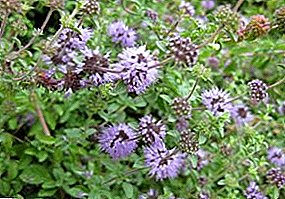 Marsh mint, or fleece, refers to the perennial plants of the genus Mint. In Europe, it grows almost everywhere, it can also be found on the territory of the Caucasus, Turkmenistan, East Asia, and North Africa. 95% of the fleabane essential oil consists of pulegon, also contains menthol, limonene. Due to this, it is used in perfumery, confectionery, canning production.
Marsh mint, or fleece, refers to the perennial plants of the genus Mint. In Europe, it grows almost everywhere, it can also be found on the territory of the Caucasus, Turkmenistan, East Asia, and North Africa. 95% of the fleabane essential oil consists of pulegon, also contains menthol, limonene. Due to this, it is used in perfumery, confectionery, canning production.
Traditional medicine gives this plant antiseptic, abortive, wound healing properties and recommends for the treatment of whooping cough, asthma, hysteria.
The height of the swamp mint is from 20 to 60 cm. The stems are branched, diffusely hairy. Petiolate leaves about 1 cm in length, sphenoid at the base, elliptical or oblong-ovate. Mauve flowers with a tubule of white color, formed into dense rings of almost spherical shape. Bloom in mid - late summer. Brilliant, brown, ovoid fruits ripen in late summer - early autumn.
These are just a few varieties of mint with photos and descriptions for each title. As you can see, this beautiful grass has a lot of useful qualities, and everyone can choose the one that is suitable for his needs.


